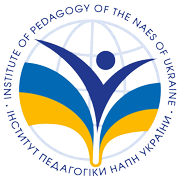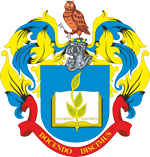Tasks for Developing Creative Thinking in Pupils and Students Through Mathematics Learning
Abstract
This article addresses the development of creative thinking in pupils and students during mathematics instruction through the use of specially designed tasks. The purpose of the article is to highlight the types of mathematical problems that should be used for the development of creative thinking of pupils and students, to check their effectiveness in the process of teaching mathematics. The study presents a system of creatively oriented tasks known as «Rich tasks». These tasks are categorized into open and integrative tasks. Open tasks are further divided into problem situations, open-ended tasks, and research tasks. Integrative tasks include those that help students establish content and conceptual connections between different sections of school mathematics, systematize and generalize knowledge, and foster creative thinking. Additionally, integrative tasks encompass problems originating outside of mathematics but requiring mathematical methods for their solutions, as well as tasks that help students connect elementary mathematics with higher-level mathematical disciplines (such as mathematical analysis and linear algebra) studied concurrently or in the future. The analysis of students’ responses to Torrance’s Figural Test of Creativity supports the conclusion that the methodology of using creatively oriented tasks is effective. It was concluded that for the development of creative thinking of pupils and students in the process of learning mathematics, it is advisable to use Rich tasks. The main types of Rich tasks include open and integrative tasks. For the development of creative thinking of pupils and students, it is advisable to use such types of open-ended tasks as problem-situation tasks, open-ended tasks and search-research tasks. Also, in the process of teaching mathematics to pupils and students, it is advisable to use such types of integrative problems as problems, the solution of which helps students to understand the content and conceptual connection between separate sections of school mathematics, problems that arose outside the boundaries of mathematics, but their solution requires use of mathematical methods. And for students, it is advisable to offer this type of integrative problems as problems, the solution of which contributes to the establishment of connections between elementary mathematics and the disciplines of higher mathematics. As the results of the experimental study showed, the students' activity of recognizing, classifying, solving and creating from open and integrative Richtasks positively contributed to the development of the ability to analyze, compare, pose a problem, generate new ideas, classify, draw conclusions, establish relationships between elementary and separate sections higher mathematics, flexibility and originality.
Downloads
References
Ачкан, В. В., & Власенко, К. В. (2020). Задачі як засіб розвитку творчих здібностей студентів у процесі навчання елементарної математики. Розвиток інтелектуальних умінь і творчих здібностей учнів та студентів у процесі навчання дисциплін природничо-математичного циклу «ІТМ-2020». Матеріали IV міжнар. дистан. наук.-метод. конф. (с. 15–17). Суми: ФОП Цьома С. П. [in Ukrainian].
Бабак, А. І., & Вольянська, С. Є. (2021). Креативне мислення – ключова компетентність педагога ХХІ століття. Теорія та методика навчання та виховання, 51, 18–22. doi: 10.34142/23128046.2021.51.02 [in Ukrainian].
Благодир, Л. А. (2015). Задачі як засіб розвитку творчого мислення учнів на уроках математики. Розвиток інтелектуальних умінь і творчих здібностей учнів та студентів у процесі навчання дисциплін природничо-математичного циклу «ІТМ*плюс–2015». Матеріали ІІ міжнар. наук.-метод. конф. (Суми, 3–4 груд. 2015 р.): [у 3 ч.]. Ч. 1 / упорядн. Чашечникова О.С. Суми: видавничо-виробниче підприємство «Мрія» [in Ukrainian].
Болотіна, М. П., & Івашина, О. В. (2023). Формування креативного мислення у молодших школярів на уроках математики. Початкова освіта: сучасні перспективи розвитку. Матеріали ІІІ всеукр. наук.-практ. конф. (Кременчук, 9 груд. 2022 р.). (с. 33–35). Кременчук: Методичний кабінет. [in Ukrainian].
Колесник, Є. А. (2013). Розвиток творчого мислення майбутнього вчителя математики у процесі розв’язування задач різними способами. Педагогічні науки: теорія, історія, інноваційні технології, 2 (28), 241–247. [in Ukrainian].
Концепція «Нова українська школа». (2016). Затвердж. рішенням Колегії МОН від 27.10.2016 р. № 10. Взято з: https://www.kmu.gov.ua/storage/app/media/reforms/ukrainska-shkola-compressed.pdf /[in Ukrainian].
Про затвердження професійного стандарту за професіями «Вчитель початкових класів закладу загальної середньої освіти», «Вчитель закладу загальної середньої освіти», «Вчитель з початкової освіти (з дипломом молодшого спеціалісту». (2020). Наказ Міністерства розвитку економіки, торгівлі та сільського господарства України № 2736 від 23.12.2020 р. Взято з: https://zakon.rada.gov.ua/rada/show/v2736915-20#Text. [in Ukrainian].
Слєпкань, З. І. (2006). Методика навчання математики. Київ: Вища школа. [in Ukrainian].
Чашечнікова, О. С. (2011). Створення творчого середовища в умовах диференційованого навчання математики. (Монографія). Суми: Видавництво ПП Вінниченко М. Д., ФОП Литовченко Є.Б. [in Ukrainian].
Яншина, Т. А. (2013). Психологічний супровід інтелектуального розвитку обдарованих: діагностика та розвиток особистісних якостей. Київ. [in Ukrainian].
Gojak, L. (2013). A key to deep understanding: The importance of rich tasks in k-12 mathematics, 2013. Retrieved fom: https://s3.amazonaws.com/ecommerce-prod.mheducation.com/unitas/school/explore/research/reveal-math-rich-tasks-white-paper.pdf [in English].
Vlasenko, К., Аchkan, V. Chumak, O., Lovianova, I., & Armash, T. (2023). Problem-Based Approach to Develop Creative Thinking in Students Majoringin Mathematics at Teacher Training Universities. Universal Journal of Educational Research, 8 (7), 2853–2863. [in English].
Kajander, A., Manuel, D., & Sriraman, B. (2016). Exploring creativity: from the mathematics classroom to the mathematicians’ mind. Retrieved from: https://www.researchgate.net/publication/324543387_Exploring_Creativity_From_the_mathematics_classroom_to_the_mathematician%27s_mind [in English].
Noreen, R., & Rana, A. M. K. (2019). Activity-Based Teaching versus Traditional Method of Teachingin Mathematics at Elementary Level. Bulletin of Education and Research, 41 (2), 145–159. [in English].
Schmidt, W., Burroughs, N., & Cogan, L. (2011). World Class Standards for Preparing Teachers of Mathematics. Michigan State University Center for the Study of Curriculum & The Education Policy Center. Retrieved from: https://education.msu.edu/epc/library/documents/WP37WorldClassStandardsforPreparingTeachersofMathematics.pdf) [in English].
Torrance, E. P. (1972). Tests de Pensée Créative. Paris: Centre de Psychologie Appliquée. [in French].
Copyright (c) 2024 Pedagogical Discourse

This work is licensed under a Creative Commons Attribution-NonCommercial-ShareAlike 4.0 International License.

















